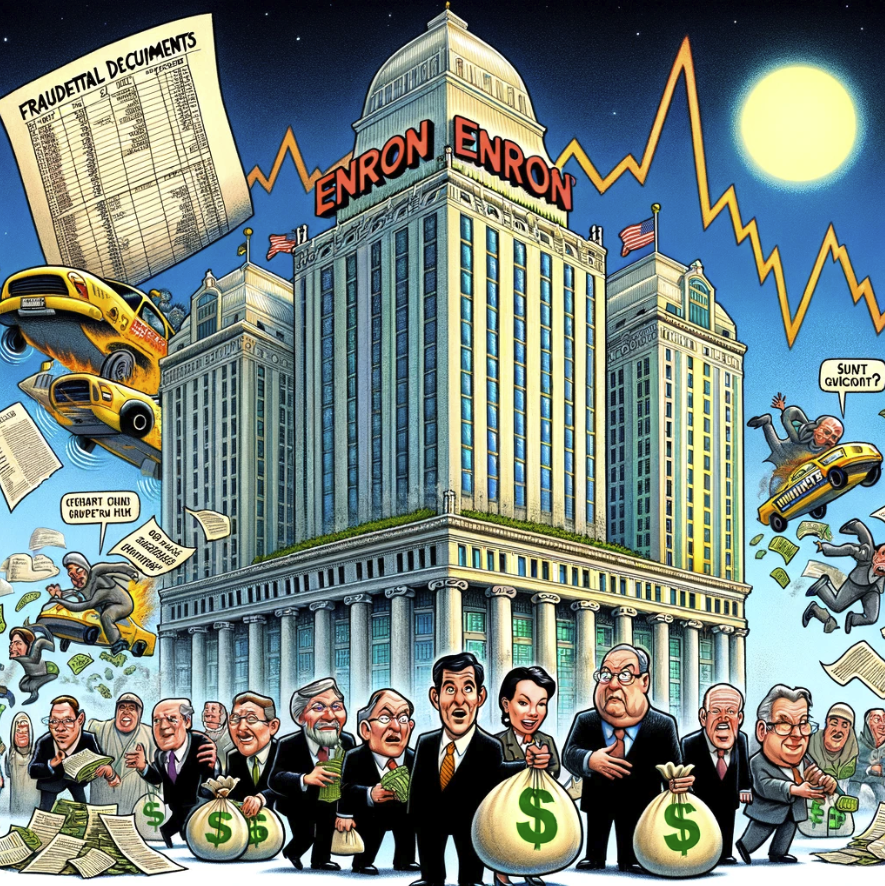The assertion that Enron could have simply survived with new management and declared bankruptcy doesn’t fully capture the complexities of the company’s situation.
Here’s why:
Table of Contents
Extent of the Damage
- Massive Debt: Enron’s financial woes went far beyond simple mismanagement. The company had piled on massive debt through its off-balance sheet entities and risky trading strategies. Bankruptcy allows restructuring, but even a reorganization wouldn’t have magically erased Enron’s enormous financial burdens.
- Destroyed Reputation: Enron’s accounting scandal shattered its public image and investor trust. Even with new leadership, regaining market confidence and securing necessary investments to operate would have been incredibly challenging.
- Regulatory Scrutiny: The scandal triggered intense legal and regulatory investigations, making it practically impossible for the company to function normally. Navigating those investigations and potential penalties while attempting business continuity would have been a monumental task.
Beyond Bankruptcy
- Criminal Charges: The executives involved faced criminal charges for their fraudulent activities. New management wouldn’t have absolved Enron of legal culpability or the associated consequences.
- Collateral Damage: Enron’s collapse had a ripple effect on the energy sector and beyond, impacting partnerships, contracts, and employee livelihoods. Even if the core business somehow survived, the wider damage might have been irreparable.
New Management Challenges
- Untangling the Mess: Inheriting a company riddled with accounting deceit and hidden liabilities would have been a logistical and financial nightmare. Unraveling the complex web of Enron’s financial schemes would have consumed massive resources, potentially exceeding any potential benefit.
- Attracting Talent and Resources: Recruiting qualified personnel and securing financing with Enron’s tainted reputation would have been incredibly difficult. The risk of being associated with such a scandal would have deterred many.
Alternatives Considered
- Restructuring Attempts: Various efforts were made to restructure and salvage parts of Enron. However, the sheer scale of the problems and the lack of confidence ultimately led to liquidation.
- Asset Sales: Attempts were made to sell off profitable assets, but the limited options and depressed valuations due to the scandal yielded insufficient returns.
Enron Fraud Example: Dabhol Power Station
Enron’s fraud with the Dabhol Power Station involved multiple tactics to create the illusion of profitability and hide significant project risks.
Here’s a breakdown of some key methods:
- Special Purpose Entities (SPEs): Enron created off-the-books entities to hide the project’s true financial state. They transferred debt and losses from the Dabhol project to these SPEs, making Enron’s financial statements appear healthier.
- Mark-to-Market Accounting: Enron used aggressive accounting practices, valuing the Dabhol project based on future projections rather than actual performance. This inflated the project’s reported profits despite ongoing losses.
- Guaranteed Revenue Recognition: In some cases, Enron may have recognized revenue from the Dabhol project even before it secured power purchase agreements with the Maharashtra government, further misleading investors about the project’s viability.
- Inflated Construction Costs: There have been allegations of inflated construction costs at the Dabhol plant, potentially enriching certain parties involved while further draining the project’s finances.
These tactics aimed to paint a picture of a successful venture, attracting investments and keeping Enron’s stock price artificially high.
However, the reality was a poorly planned and financially troubled project. Here are some additional consequences:
- Hidden Liabilities: By shifting debt to SPEs, Enron hid the project’s true liabilities from investors and creditors, ultimately contributing to its financial collapse.
- Delayed Completion: The project faced significant delays due to construction issues, political resistance, and environmental concerns, further escalating costs.
The Dabhol Power Station became a symbol of Enron’s fraudulent practices.
The project’s ultimate failure exposed the accounting loopholes and unethical behavior that fueled the company’s downfall.
Conclusion
While new management might have brought fresh perspectives and potentially steered the company towards a different path, Enron’s problems ran deeper than simply needing a leadership change. The immense debt, destroyed reputation, legal entanglements, and wider collateral damage made any form of survival, even through bankruptcy, highly improbable.
Related


